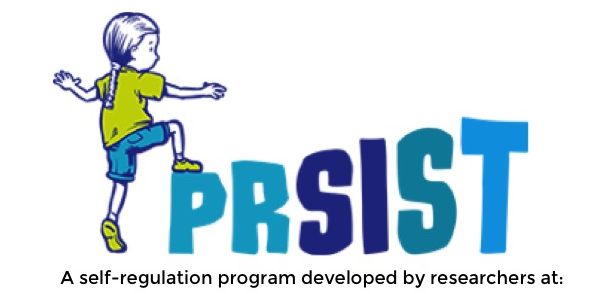
Blind Spot
What to do: Create a simple obstacle course that can be completed by someone who has their eyes closed, but is assisted through verbal instruction, without risk of injury (e.g., lines of tape on the ground to balance across, plastic cones to walk around, a beanbag to put in a bucket). Assemble children into pairs, and tell them that one member of the pair will need to keep their eyes closed and the other will walk beside them and give them instructions on how to navigate the obstacle course. First demonstrate the obstacle course for the children, and then have one child in the pair close their eyes (no peeking!) As each pair progress through the obstacle course, encourage others to watch and talk about how they might avoid some of the difficulties they observe. There is benefit not only from being the pair doing the obstacle course, but also watching and considering what they will do during their turn.
Too easy? How to increase challenge: Add elements to the course that require more precise actions (e.g., picking up a beanbag and putting it in a bucket, stepping only in some hula hoops and not in the ‘swamp’ that surrounds it, etc.) In all cases, ensure that the elements that are added emphasise accuracy (slowly and carefully) over speed (e.g., which could lead to running in to or tripping over things), and maintain safety in the activity.
Ideal formation(s): Pairs of children.
What you need: Obstacle course equipment (e.g., plastic cones, pieces of tape to mark off areas, etc.)
What it does: This activity challenges children’s ability to listen carefully to others and to follow instructions. It also requires children to resist temptations (to look). For those children leading others, it promotes leadership and effective communication. This can also be used as a stimulus to discuss how our actions have consequences for others.
Links to EYLF:
- Establish and maintain respectful, trusting relationships with other children and educators; Respond to ideas and suggestions of others (from Outcome 1.1)
- Be open to new challenges and discoveries; Take considered risks in their decision-making and cope with the unexpected; Persist when faced with challenges and when first attempts are not successful; Increasingly co-operate and work collaboratively with others (from Outcome 1.2)
- Display awareness of and respect for others’ perspectives; Reflect on their actions and consider consequences for others (from Outcome 1.4)
- Cooperate with others and negotiate roles and relationships in play episodes and group experiences (from Outcome 2.1)
- Listen to others’ ideas and respect different ways of being and doing (from Outcome 2.2)
- Participate with others to solve problems and contribute to group outcomes (from Outcome 2.4)
- Make choices, accept challenges, take considered risks, manage change and cope with frustrations and the unexpected; Demonstrate trust and confidence (from Outcome 3.1)
- Demonstrate spatial awareness and orient themselves, moving around and through their environments confidently and safely (from Outcome 3.2)
- Persist even when they find a task difficult (from Outcome 4.1)
- Convey and construct messages with purpose and confidence, building on home/family and community literacies (from Outcome 5.1)




